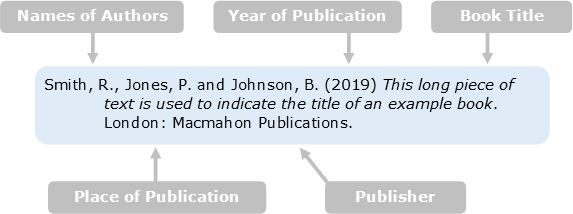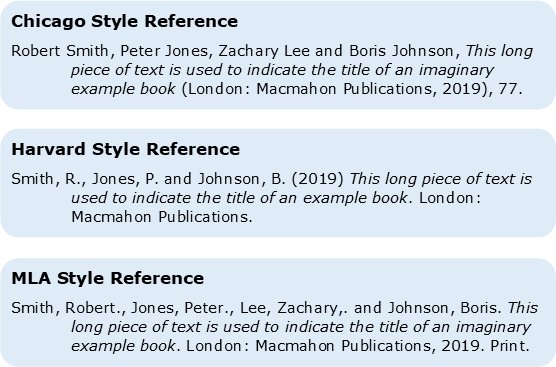How can I cite and reference multiple authors?

This is the first of three chapters about Including Authors. To complete this reader, read each chapter carefully and then unlock and complete our materials to check your understanding.
– Review the differences between citations and references
– Explore how referencing style affects order and layout
– Introduce step-by-step guidance for formatting, ordering and laying out citations and references with multiple authors
Before you begin reading...
-
video and audio texts
-
knowledge checks and quizzes
-
skills practices, tasks and assignments
Chapter 1
Referencing is an important aspect of academia, particularly for any student that wishes to follow correct academic conduct and protect themselves from accusations of plagiarism. Creating accurate references and citations can be tricky however, especially for students – and especially since there are numerous referencing styles to potentially learn and use. Because one of the trickiest aspects is in learning how to accurately include authors’ names, this short three-chapter reader therefore deals with writing those names (Chapter 1), identifying family and given names cross-culturally (Chapter 2) and referencing organisations instead of individuals (Chapter 3).

How are citations and references different?
To acknowledge every published source that’s included as support in a written assignment, students will need to use a number of in-text citations. As can be seen in the example below, citations are short pieces of text that indicate the family names of the source authors, the year of publication of that source, and sometimes also the page numbers or URL:

Correspondingly, end-text references are longer pieces of text that are placed at the end of an assignment within a reference list. Such references directly correlate with the citations used in the body of the text and are intended to inform the reader of the sources that were cited in that assignment or published work. As can be seen in the diagram below, references offer complete and comprehensive source details, such as the authors’ names, the year of publication, the title of the source and the name of the publisher:

Does the referencing style matter?
When it comes to correctly writing, formatting, ordering and laying out your citations and references, the referencing styles that’s required matters a great deal. From Chicago to Harvard to MLA, there are numerous referencing styles that your university may require depending on your field of study, your module and the preferences of your tutor. The following examples demonstrate some of this

One Author (Harvard Style)
As all referencing styles cannot be demonstrated, we will instead focus on the Harvard Style as this is generally the neatest and most common. When writing a citation for a source that contains one author, only the family name is required:

When writing a one-author reference, the following formatting is required:

Two Authors (Harvard Style)
Similarly, when writing a two-author citation, students should copy the following:

While references are written like so:

Three Authors (Harvard Style)
For citations using three authors, the following structure is recommended:

For references in the Harvard Style, students may copy this structure:

Four or More Authors (Harvard Style)
Because references must provide complete source details, writing four or more authors follows the same pattern as when writing three. For citations, however, common practice when including this many authors is to use the italicised Latin phrase ‘et al.’ after the first author’s name, as in the following:

To reference this reader:
Academic Marker (2022) Including Authors. Available at: https://academicmarker.com/academic-guidance/referencing/referencing-challenges/including-authors/ (Accessed: Date Month Year).
Downloadables
Once you’ve completed all three chapters in this short reader about Including Authors, you might then wish to download our Chapter Worksheets to check your progress or print for your students. These professional PDF worksheets can be easily accessed for only a few Academic Marks.
Chapter 1 explores the topic: How can I cite and reference multiple authors? Our Chapter 1 Worksheet (containing guidance, activities and answer keys) can be accessed here at the click of a button.
Chapter 2 explores the topic: How can family and given names be identified? Our Chapter 2 Worksheet (containing guidance, activities and answer keys) can be accessed here at the click of a button.
Chapter 3 explores the topic: Can organisations be referenced as authors? Our Chapter 3 Worksheet (containing guidance, activities and answer keys) can be accessed here at the click of a button.
To save yourself 2 Marks, click on the button below to gain unlimited access to all of our Including Authors Chapter Worksheets. This All-in-1 Pack includes every chapter, activity and answer key related this topic in one handy and professional PDF.
Collect Academic Marks
-
100 Marks for joining
-
25 Marks for daily e-learning
-
100-200 for feedback/testimonials
-
100-500 for referring your colleages/friends